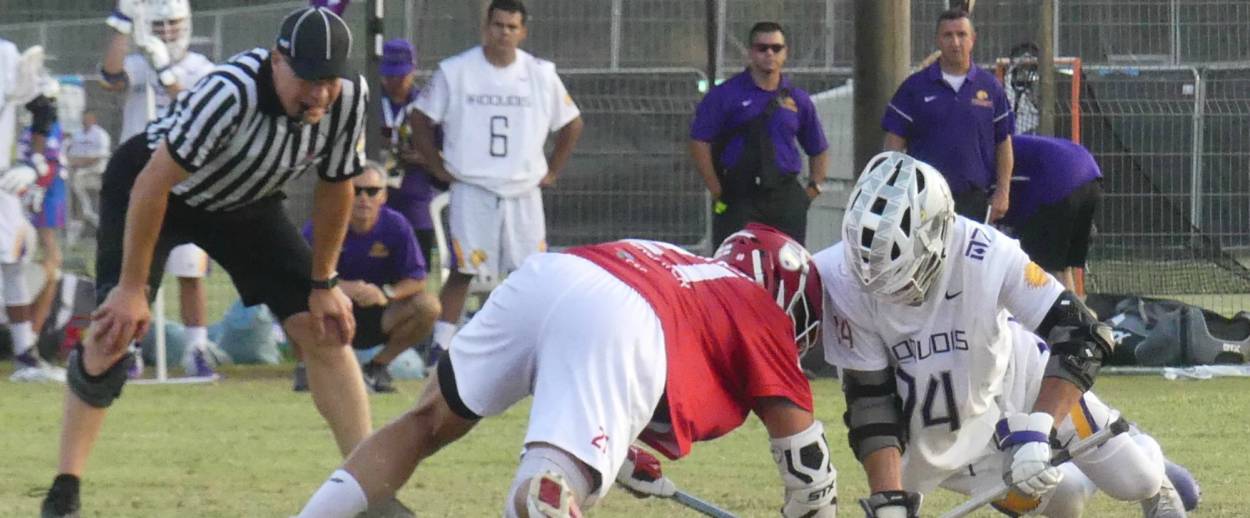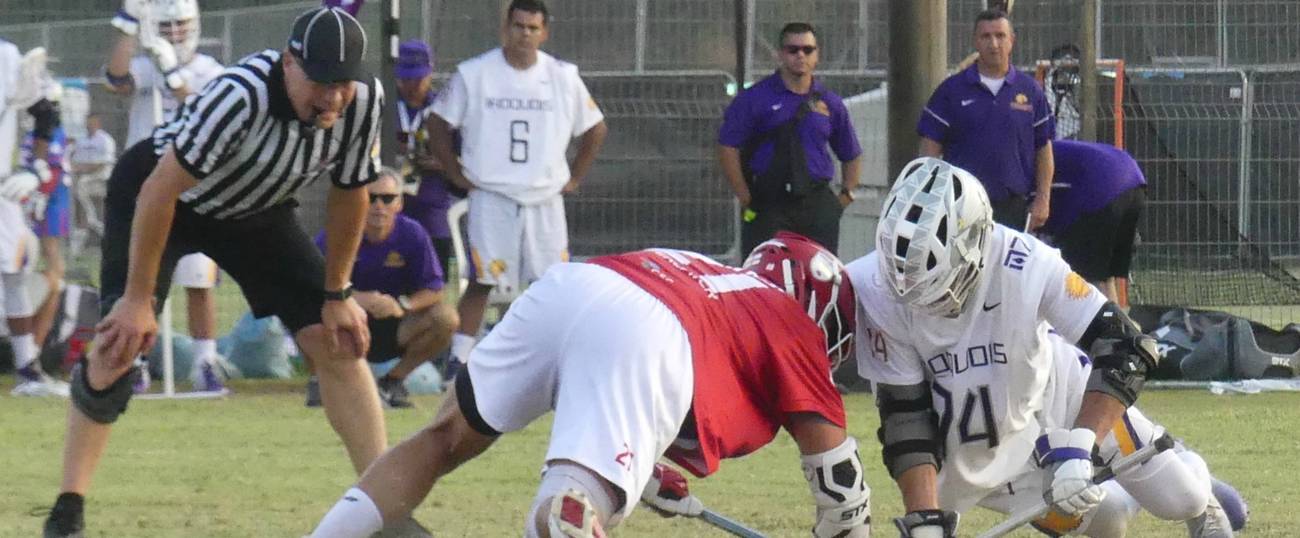Israel and Iroquois Take On the Big Boys of Lacrosse
Support the indigenous




The listed population of Six Nations, Ontario, home of star Iroquois Nationals attacker Tehoka Nanticoke, is a little over 13,400. As Nationals coach Mark Burnam explained, the number of youth, junior, collegiate, and professional Iroquois lacrosse players lies somewhere between 2,000 and 5,000. “Only 100 of them are good enough to try out for the world team, and then probably 40 are good enough to make it, and then you gotta pick 20 from that.” Those 20 are consensus third-best team on earth, a squad capable of beating the two teams above them—teams representing countries with a combined population of 350 million people—if everything goes their way.
The Iroquois Nationals have thrived because the team is an intimately communal institution in a way that their rivals never could be. Onondaga, just south of Syracuse, has around 2,000 inhabitants, which is over twice as many as live on the Cattaraugus Reservation near the Canadian border south of Niagara Falls. The Onondaga Reservation also has a state-of-the-art arena complex that never closes and where locals and even top college players sometimes show up for pickup games at 3 in the morning.
Up until the 1970s, Native American artisans produced the majority of the world’s lacrosse sticks—each year, the Syracuse University team would head to the Onondaga Reservation on the southern end of town to pick out their implements for the season. The wooden sticks were shorter and heavier than their modern-day mass-produced equivalents. They ended in a hook, with leather lattice-work covering the span between the stick’s shaft and its curved end point. Today’s sticks are scientifically designed to be maneuverable—in one game, I saw an England player practically somersault through the turf without dropping the ball.
Less than a year ago, Johnson Jimerson, who grew up in Cattaraugus, was at a convention of Iroquois in upstate New York that included a traditional, wooden-stick lacrosse game. Jimerson watched from the sideline: He hadn’t played organized lacrosse since a brief stint with a Canadian team over seven years earlier. Ansley Jemison, the executive director of the Iroquois Nations, remembered Jimerson from his days as a standout field lacrosse defender in high school over a decade earlier. While the Iroquois teams are renowned for their offensive creativity, defense can be a question mark: Which Iroquois players could break Canada’s otherworldly team-orienting passing game, or keep a near-unguardable American shooter like Jordan Wolf from ravaging the cage? With the world championships looming, Jemison realized he could use a long stick familiar with the field game.
“He came walking over down the sideline and was like, where’s your stick?” Jimerson said he didn’t mind watching. Jemison replied: “You should get a stick in your hand again and come try out. We’re going to Israel next summer.”
Jimerson is a tower of a man. He has a thin, vertical physique, and working construction in Wisconsin has kept him in close to playing shape. He has a wingspan that would make any lacrosse coach salivate, with arms that can carve wide circles of mayhem through an opposing attack. Still, Jimerson didn’t think he had a shot at making the team, so he laughed off the invitation.
It took his wife to convince him the Iroquois program boss was actually serious. Just a couple of days after they were married, she announced they were getting in the car and driving the 15 hours to the tryout in Syracuse. “I had the bare minimum stuff you know—my stuff was kinda old,” Jimerson recalled. He got to the field just an hour before the first practice began. He made it through a round of cuts, to a tryout held at the Carrier Dome, Syracuse University’s legendary football, basketball, and lacrosse stadium. “It was like, yeah, this is actually a possibility, huh?” he began thinking.
Jimerson is a defender, and doesn’t usually cross into the opposition’s side of the field. He is one of the players shadowing the circle during faceoffs, primed to harass the ball carrier if the attack moves in his direction or to scoop up the ball if it pops into the Iroquois’ half. “Take away his angle if he wins it,” Jimerson said of his plan against Canadian faceoff specialist Geoff Snider, who he’d be playing against the next night. “Just stay on him, just play my game—don’t feed into his game … expect the blow, and expect to give the blow.”
In the Iroquois game against England, with the score still close, the faceoff man scooped up the ball off the draw and tried to maneuver past Iroquois faceoff specialist Jeremy Thompson. “He was kinda distracted,” Jimerson recalled. “He was still trying to find [Thompson’s] stick, and he was looking at his stick when I came out from his blindside.” Jimerson laid a clattering body check, sprawling the ball carrier on the turf and earning the kind of one-minute penalty that gets you congratulated on the sideline.
Jimerson is among the older players on the Iroquois Nationals. He had a more traditional upbringing than most of his teammates, some of whom are still in their teens. He speaks some of the Iroquois language, although he says that isn’t the only marker of traditionalism available in Iroquois life. To live traditionally “means you still have a belief in something that we did a long time ago,” he explained. “It doesn’t have to be language, singing, dancing, or the different ceremonies that we do. It can be something else, like farming the way we used to farm.” There’s lacrosse, too: “Lacrosse is a very traditional thing, you know,” he said. “It’s a gift that we’re able to be here.”
People like Jimerson are critical to keeping Iroquois culture vital. Lacrosse is important partly because it’s a common ground where everyone meets, regardless of how much of the language or culture they know. It’s a common ground for Native Americans beyond the Iroquois communities, too. “I know I’ve got the support not only from the Iroquois people but from people down south, people up north, Northwest, Yakamas, Hopis, Navajos. I’ve got a lot of people behind me and we have a lot of people behind us” Jimerson said. “This team’s all native.”
The Iroquois’ final match of the group stage was against Scotland, which had replaced Japan in the tournament’s blue group after a surprising sixth overall finish at the 2014 world championship (the top six teams make it into the next tournament prestigious blue group, whose top four finishers automatically make it to the quarter or semifinals after the group stage). The Scots had lost all four of their previous games and had been eliminated from medal contention. With nothing but pride and seeding for the consolation bracket on the line, they handed the Iroquois the toughest of the three non-U.S., non-Canada games they played during the group stage. Perhaps relatedly, at the tournament a bagpipe player leads the Scottish team in a singalong of “Flower of Scotland” before every game.
It had been two nights since the Iroquois team had put together the sort of frightening four- or five-goal run that they would need to knock off Canada or the U.S. For the fourth game in a row, the Iroquois surrendered the first two goals of the contest. More than once the Scots caught the Iroquois taking just a split-second too long to slide defenders into the slot on defense, and for a second night in a row the Iroquois team’s attackers were bouncing shots off of the post and struggling to build offensive momentum. “Bad energy,” Jemison said after the game. “We’ve gotta be able to get up to these kinds of games.”
Still, it’s hard to complain about a 14-7 win in the context of a gruelingly paced event like this one. “This is literally the first week together and we’re playing in the world games,” Burnam told me after the game. “I don’t know if people comprehend that. We’re playing with the best.”
Now, the serious part of the tournament begins. Wednesday night is the quarterfinals against Puerto Rico. The winner of that game gets Canada in the semis—and then the winner of that one gets the U.S. (in all likelihood) at Netanya Stadium on Saturday morning. The Iroquois can accept an off night, especially at the hands of a gutsy Scottish team, if it sharpens them for what they expect is coming.
Israel, which looked shaky in their first elimination game against the Philippines, laid a beating on Ireland last night, with the main grandstand packed despite the game’s late 9 p.m. start. Israel is the only place on earth where crowds at sporting events spontaneously break out into “Avinu Shebashamayim,” something that has now occurred at a lacrosse game.
The Israelis will probably lose to Australia when they play in the quarterfinals at 9 p.m. local, 2 p.m. EST tonight. The Aussies are fast, coordinated, and fearsome on defense; they’ve been the third- or fourth-best team in the world for about as long this tournament has existed. But Israel is stacked with former Division-I players and has proven it can go on long scoring streaks. Victory, and a spot in the medal round, isn’t out of the question.
Armin Rosen is a staff writer for Tablet Magazine.